Nature: Kangaroo Mob Blu-ray Movie
HomeNature: Kangaroo Mob Blu-ray Movie 
PBS | 2011 | 53 min | Not rated | Feb 14, 2012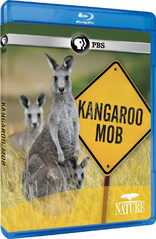
Movie rating
7 | / 10 |
Blu-ray rating
| Users | 0.0 | |
| Reviewer | 3.5 | |
| Overall | 3.5 |
Overview
Nature: Kangaroo Mob (2011)
| Documentary | Uncertain |
| Nature | Uncertain |
| Family | Uncertain |
| Other | Uncertain |
| Biography | Uncertain |
Specifications
Video
Video codec: MPEG-4 AVC
Video resolution: 1080i
Aspect ratio: 1.78:1
Original aspect ratio: 1.78:1
Audio
English: Dolby Digital 5.1
English: Dolby Digital 2.0
Subtitles
English
Discs
25GB Blu-ray Disc
Single disc (1 BD)
Playback
Region A (B, C untested)
Review
Rating summary
| Movie | 4.0 | |
| Video | 3.5 | |
| Audio | 3.0 | |
| Extras | 0.0 | |
| Overall | 3.5 |
Nature: Kangaroo Mob Blu-ray Movie Review
Start seeing kangaroos
Reviewed by Brian Orndorf February 19, 2012In popular culture, kangaroos are traditionally beloved for their odd shape and undeniable cuteness. Just thinking of kangaroos inspires images of bouncing bundles of fur hosting adorable joeys in their pouches, peacefully hopping along on the hunt for martinis (hey, it’s my daydream). In Canberra, the capital of Australia, the kangaroo is a decidedly unstable element of daily life. Facing a surge in population numbers, residents have witnessed an onslaught of kangaroo activity in the area, with the oblivious beasts taking over parks and backyards while prowling for food. The forward behavior of the kangaroo has created a major problem in Canberra, necessitating a culling period to help reduce the population and ease the worrisome increase in roadway collisions. Once thought to be a harmonious symbol of Australia, the kangaroo has become a destructive nuisance to some, leaving local authorities, animal activists, and suburban bystanders unsure of how to attack this problem in a manner that satisfies the public and protects the innocent animals at the center of the disruption.
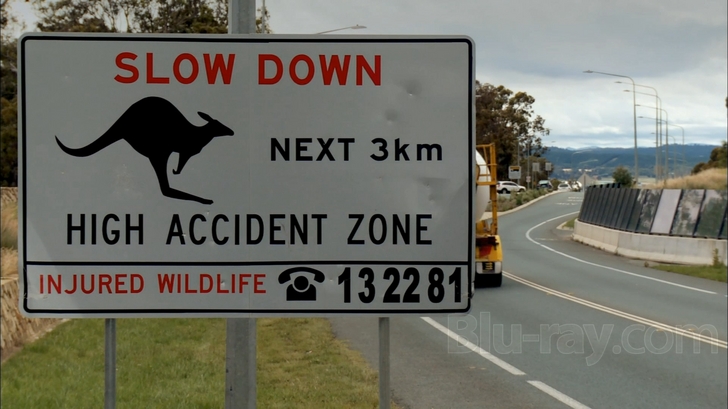
Director Steve Westh approaches the difficult issues of “Kangaroo Mob” by keeping close tabs on the documentary’s two stars. Eastern grey kangaroo Madge is a mother of two, often seen by witnesses in the suburban sprawl of Canberra, lounging and grazing, raising her two joeys in relative peace. Black Spot is a larger male kangaroo, a dominant leader of his mob, also dashing between the comfort of the grasslands and the irresistible feeding potential of succulent domestic lawns, keeping tabs on his squad of females and numerous joeys. As the two focal points of the program, Madge and Black Spot come to represent the entire kangaroo nation, with their Canberra compulsions urging them into forbidden terrain, avoiding speeding cars, bullying dogs, and curious humans while inching closer to bustling networks of daily activity.
On the kangaroo case are government ecologists Claire Wimpenny and Don Fletcher, two concerned individuals tasked with studying the population explosion and tracking the movement of the creatures, fitting Madge and Black Spot for bulky radio and video collars to help collect evidence of habit and routine. Committed to the cause, Wimpenny and Fletcher hit the streets on the lookout for daring kangaroos, investigating reported sightings and tenderly inspecting heavily sedated subjects. The pair is also concerned with the reputation of the kangaroo, setting out to debunk reports that the creatures have commenced vicious home invasions, smashing in household windows to raise a little hell indoors with unsuspecting Australians. Although interested in the protection of the kangaroos and the exposure of their antics to a worldwide audience, Wimpenny and Fletcher are also government employees, working to find a way to alleviate the need for the culling process, investigating birth control methods that, unfortunately, are years away from any possible implementation.
The call to cull is a major source of contention for the city of Canberra, inspiring animal activists to interfere with the process, attempting to distract the kangaroos away from hunters. Culling is a gruesome event that involves the shooting, beheading, or bludgeoning of the targeted kangaroos, horrifying friends of the animal, yet it remains the only available method of population control, sparking heated debate around town. While “Kangaroo Mob” doesn’t dwell on the specifics of the cull (it’s a family program after all), it sustains an objective approach to the subject, highlighting both sides of the debate. To kill or not to kill is the question, and one Canberra has been struggling with for the last few years.
As expected, the kangaroo boom can be attributed to man’s influence. Connecting the blight of over-grazing to deforestation and the eradication of the dingo (the kangaroo’s natural enemy), the creatures have no reason or place to hide, emerging from the open land to visit the suburbs, often under the cover of darkness, but not always (the documentary displays select shots from amateur photographers capturing leisurely kangaroo visits in their backyard). The invasion has resulted in a sharp increase in auto accidents and repair expenses, with kangaroos often jumping out in front of cars without awareness, creating chaos on the roads. “Kangaroo Mob” doesn’t graphically depict the splattery aftermath of these troubling collisions, but there’s enough footage here to encourage a few winces and a full understanding of Canberra’s quandary.
While death and disturbance rests heavily on the documentary, “Kangaroo Mob” does reveal a brighter side to the hop-happy occupation. Dr. Rosemary Austen run a sanctuary for kangaroos, looking to protect as many she can and rehabilitate others, hoping to make a peaceful mark on the controversy by stressing the animal’s instinctual behavior. Westh is quite skilled at balancing between cute everyday behaviors and the cold nature of animal urge, employing Black Spot’s saga as an elderly male losing his royal position to younger males as a way of reinforcing the natural predicaments of the kangaroo, making the documentary a little more than just a study of the culling jam.
Nature: Kangaroo Mob Blu-ray Movie, Video Quality 
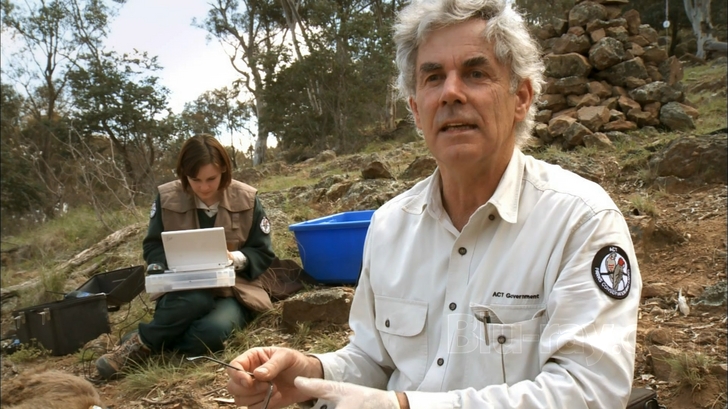
The AVC encoded image (1.78:1 aspect ratio) presentation on "Kangaroo Mob" offers a confident view of exteriors, with acceptable HD cinematography registering a pleasingly bright and mildly soft image, with a comfortable feel for outdoor adventures. Colors are quite natural, leading with pronounced greens and brown fur, while a mid-show break of summer reveals an explosion of purple flowers and yellow sun, encouraging the potential of the viewing experience. Fine detail is satisfactory for this type of program, with much of the footage captured from a far position of safety. The disc also handles file footage and news reports adequately, never disrupting the image quality. Shadow detail is quite good, with expressive blacks and pleasing distances. A few instances of banding are detected. Skintones are naturally pink and fresh.
Nature: Kangaroo Mob Blu-ray Movie, Audio Quality 
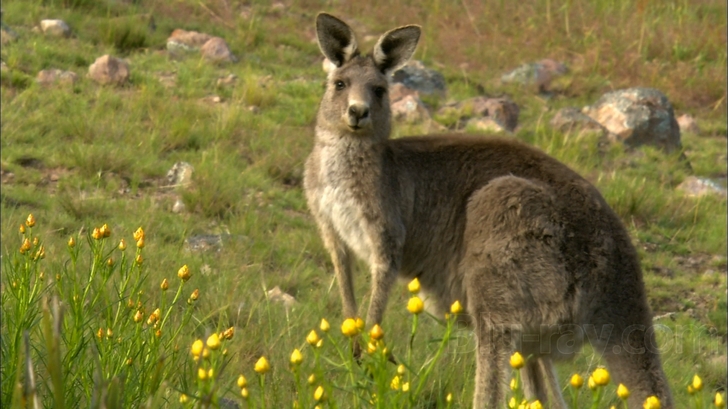
The 5.1 Dolby Digital sound mix on "Kangaroo Mob" doesn't carry a grandiose sense of dimension, only employing the rears to fill out scoring support and provide a rare feel for outdoor expanse. The action is handed a more frontal push of music and narration (by Chris Morgan), with the center channel somewhat soft, barely maintaining dominance during a few sections of the show. Voices are crisp and accents remain approachable, while atmospherics open the soundscape up only to a minor degree. Low-end is nonexistent. It's a contained mix without much flourish, meeting the PBS needs of the program to satisfaction.
Nature: Kangaroo Mob Blu-ray Movie, Special Features and Extras 
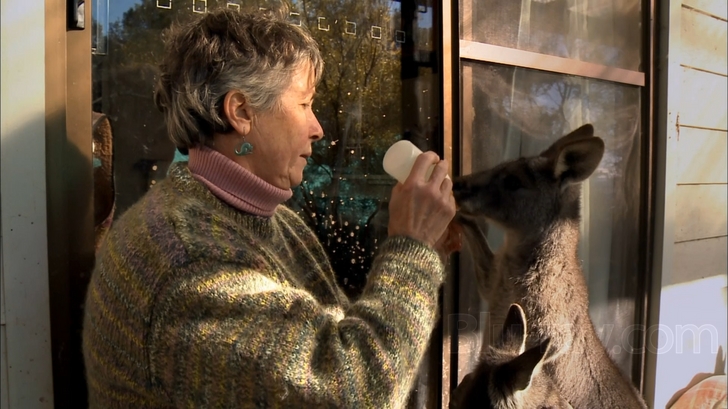
There are no supplementary features in this disc.
Nature: Kangaroo Mob Blu-ray Movie, Overall Score and Recommendation 
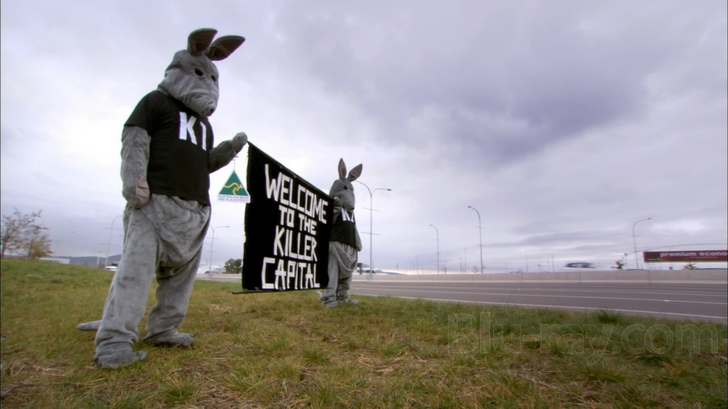
"Kangaroo Mob" breezes thorough an array of controversial topics and fascinating animal behaviors, working to compact the experience of the Canberra kangaroos into a snappily paced 53-minute-long program. What the documentary lacks in depth it makes up for with this specialized discussion, revealing an unusual predicament I believe few outside of Canberra have ever heard about. The future of the kangaroo in the area remains in limbo, but there's hope offered at the end of the show, hypothesizing that the creatures are learning and adapting to their new environment, creating a semi-comfortable balance between humans and kangaroos.
Other editions
Nature: Other Seasons

Nature: Extraordinary Animals: Africa

Nature: Broken Tail: A Tiger's Last Journey

Nature: Salmon: Running the Gauntlet

Nature: Survivors of the Firestorm

Nature: Outback Pelicans

Nature: Yosemite

Nature: Extraordinary Birds
2000

Nature: Antarctica
Under Antarctic Ice / Encountering Sea Monsters
2003-2005

Nature: Shark Mountain
2004

Nature: The Desert Lions
2008

Nature: American Eagle
2008

Nature: Amazing Places: Hawaii
Kilauea: Mountain of Fire / Violent Hawaii
2009

Nature: Amazing Places: Africa
Victoria Falls / Drakensberg: Barrier of Spears
2009

Nature: Amazing Places: Hawaii
Kilauea: Mountain of Fire / Violent Hawaii
2009

Nature: Amazing Places: Africa
Victoria Falls / Drakensberg: Barrier of Spears
2009

Nature: Cuba: The Accidental Eden
2010

Nature: Echo: An Elephant to Remember
2010

Nature: A Murder of Crows
2010

Nature: Braving Iraq
2010

Nature: Revealing the Leopard
2010

Nature: Hummingbirds: Magic in the Air
2010

Nature: Elsa's Legacy: The Born Free Story
2011

Nature: Birds of the Gods
2011

Nature: The Himalayas
2011

Nature: Bears of the Last Frontier
Bears of the Last Frontier: City of Bears / Bears of the Last Frontier: The Road North / Bears of the Last Frontier: Arctic Wanderers
2011

Nature: Jungle Eagle
2011

Nature: My Life as a Turkey
2011

Nature: Radioactive Wolves
2011

Nature: The Animal House
2011

Nature: Fortress of the Bears
2012

Nature: Raccoon Nation
2012

Nature: River of No Return
2012

Nature: The White Lions
2012

Nature: Cracking the Koala Code
2012

Nature: An Original DUCKumentary
2012

Nature: Cold Warriors: Wolves and Buffalo
2013

Nature: Legendary White Stallions
2013

Nature: Great Zebra Exodus
2013

Nature: Love in the Animal Kingdom
2013

Nature: Ireland's Wild River
2014

Nature: Snow Monkeys
2014

Nature: The Gathering Swarms
2014

Nature: Fabulous Frogs
2014

Nature: Owl Power
2015

Nature: Super Hummingbirds
2016

Nature: The Story of Cats
The Story of Cats: Asia to Africa / The Story of Cats: Into the Americas
2016

Nature: Sex, Lies and Butterflies
2018

Nature: Super Cats
Super Cats: Extreme Lives / Super Cats: Cats in Every Corner / Super Cats: Science and Secrets
2018
Similar titles
Similar titles you might also like
(Still not reliable for this title)

Attenborough's Life Stories
Attenborough: 60 Years in the Wild: The Complete Three-Part Documentary Series
2013

Scenic Walks Around the World: Our Dramatic Planet

Best of Europe: Italy

Best of Europe: London & Beyond

Best of Europe: France

Earth From Above: Stunning Water
2004

Sports Illustrated Swimsuit 2011: The 3D Experience
2011

IMAX: Born to Be Wild 3D
2011

Beautiful Planet: France & Italy

The Alps
IMAX
2007

Ocean Predators 3D
2013

Dinosaurs Alive! 3D
IMAX
2007

Galápagos
2006

Frozen Planet
The Original UK Series
2011

Nature's Most Amazing Events
2009

Wonders of the Universe
BBC
2011

Journey to the Edge of the Universe
2009

Human Planet: The Complete Series
BBC
2011

Shark
2015

North America
2013